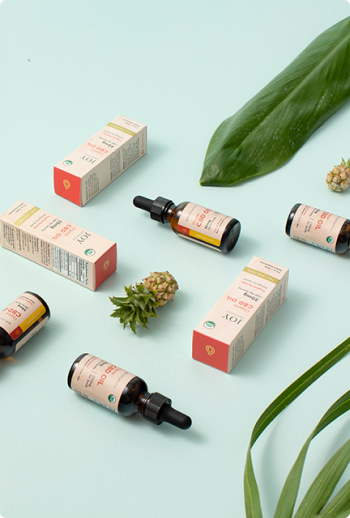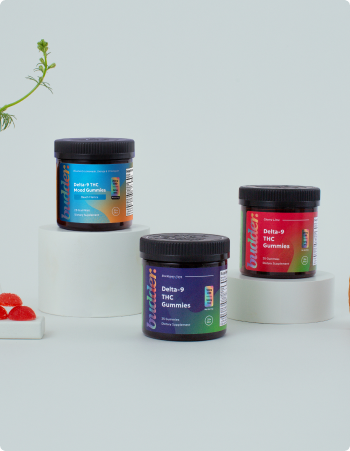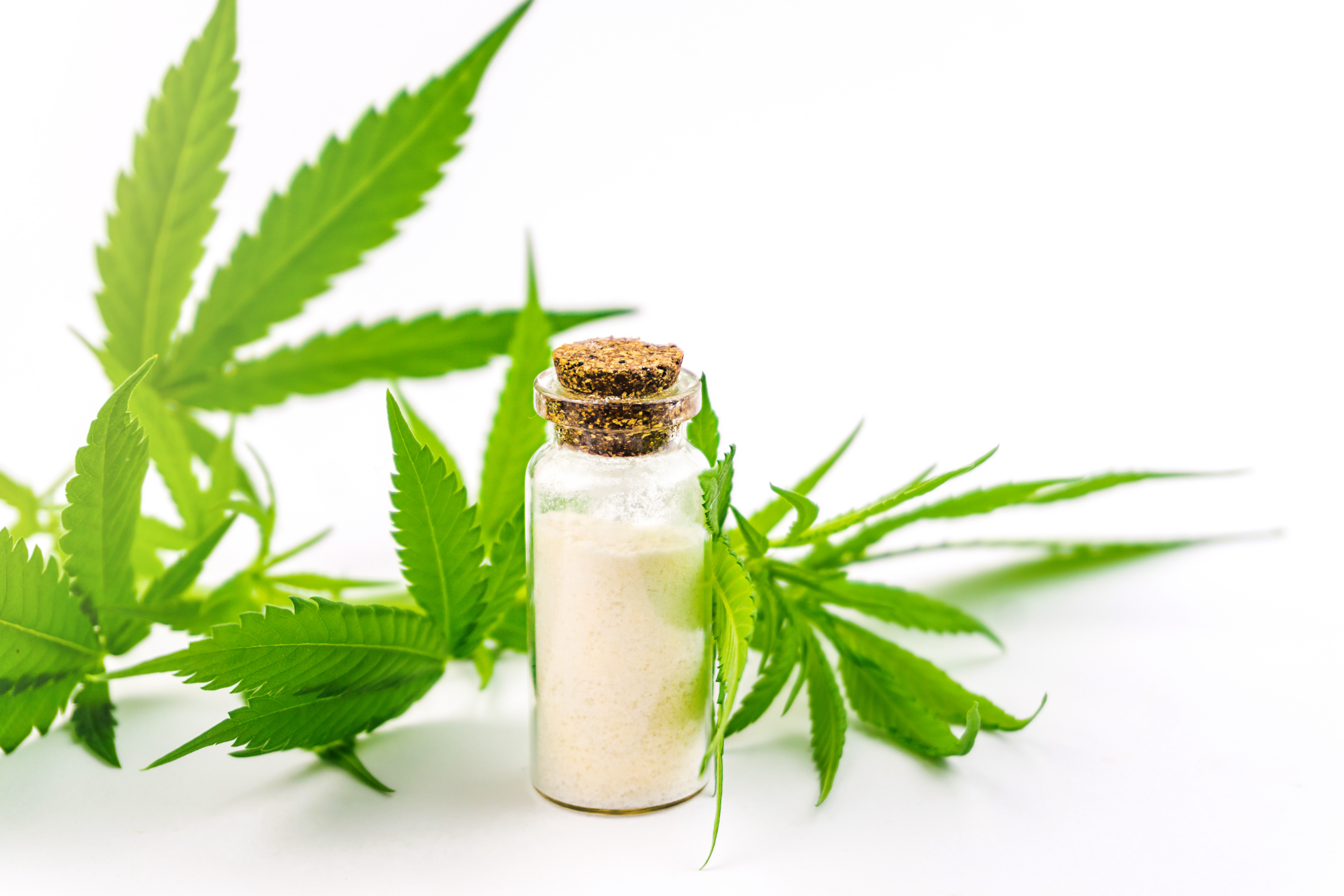CBD has become one of the most popular wellness trends to hit the scene since vitamin C. There’s a reason CBD has gone mainstream — we like to think it’s nothing short of plant magic. As it turns out, however, the benefits of CBD have more to do with science than sorcery.
If you’re just discovering CBD and are curious as to why everyone seems to be interested in it, we invite you to take a deeper look through this beginner’s guide to CBD.
What Is CBD?
CBD is a compound found in cannabis that many use for achieving overall well-being and balance in body and mind. According to the World Health Organization (WHO), there is zero public health risk or abuse potential associated with it.

The cannabis plant (Cannabis sativa L) is an extremely complex plant composed of over 500 currently identified chemical compounds. Of these compounds, over 100 of them have been classified as cannabinoids, one of which is CBD.
The most widely studied cannabinoids are tetrahydrocannabinol (THC) and cannabidiol (CBD). THC is famous for the “high” most people associate with cannabis. CBD, however, doesn’t cause the same psychoactive effects and won’t make you feel stoned in the slightest.
CBD may come from the marijuana plant or the hemp plant. Both are forms of cannabis, but in the U.S. a hemp plant must have less than 0.3% THC content. If you’re looking to avoid THC in your CBD oil, make sure you purchase hemp-derived CBD oil. Some companies, such as Joy Organics, refine out even the trace amounts of THC found in hemp as an extra precaution.
What Are the Most Common Reasons People Use CBD?
It’s safe to say that someone you know is likely using CBD. Maybe you heard about it from a friend or family member. Maybe it keeps showing up on your social media feed and you’re wondering what all the hype is about.
CBD has quickly become the most popular wellness supplement the world has ever seen and shows no sign of slowing down. CBD has gone mainstream and its popularity is much greater than anyone ever expected.
Less than a decade ago, virtually no one had even heard of CBD. These days the demand for CBD has exploded. New companies are hitting the market almost daily, and some forecast that the CBD industry will be worth $22 billion by 2022.
Why have so many people jumped on the CBD bandwagon?
As it turns out, for a number of reasons. Both scientific research and anecdotal evidence show a number of reasons people are making CBD part of their everyday wellness routine. It may be used to:
- Promote healthy skin
- Maintain a balanced mood throughout the day
- Sleep better at night
- Support healthy joints and muscles
Honestly, the list of reasons people use CBD goes on and on. While we might not use it for everything, we have seen some awesome results in our own lives and the lives of countless customers.
Wondering how it works? We don’t blame you. Let’s take a closer look.
How Does CBD Work?
If you’re curious as to how a compound from the cannabis plant can have such beneficial effects, it’s important to understand how CBD interacts with the body.
When introduced to the human body, cannabinoids (like CBD) have a unique effect on our physiological systems. Cannabinoids have shown to have an intimate connection with the central nervous system, immune system, reproductive system and more.
How exactly does it work, though?
It all comes down to the way these cannabinoids interact with certain parts of the body, particularly the endocannabinoid system (ECS).
Endocannabinoid System Basics
The endocannabinoid system was discovered in the late 1990s and has been shown to play a significant role in regulating physiological processes that affect several areas of our lives, including mood, sleep, hunger, immune response and more.
When the ECS is functioning properly, we tend to experience balanced overall health and wellness. When something is amiss with the ECS, however, health conditions and disease may manifest. In 2014, researchers suggested that “modulating endocannabinoid activity may have therapeutic potential in almost all diseases affecting humans.”
How Does the Endocannabinoid System Work?
The way the ECS works comes down to the relationship between the body’s naturally occurring cannabinoids (endocannabinoids) and cannabinoid receptors found in the body (CB1 and CB2 receptors).
Endocannabinoids
The two main naturally occurring cannabinoids in the human body are called endocannabinoids and are known as anandamide and 2- Arachidonoylglycerol, or 2-AG.
- Anandamide: Discovered in 1992, anandamide is a neurotransmitter with a very similar structure to THC. It was named after the Sanskrit word Ananda, which translates to “bliss, joy or happiness.” Anandamide plays an integral role in several bodily functions including higher thought processes, memory, motivation, pain, regulation of body temperature, appetite and fertility.
- 2-AG: 2-AG is considered the most abundant endocannabinoid found in the body and has similar properties to anandamide. It is known to play an integral role in pain management, appetite regulation and immune system function. It’s also known to modulate mood, stress and addictive behaviors.
CB1 and CB2 Receptors
CB1 and CB2 receptors are found throughout the body and regulate the effects of the body’s naturally occurring endocannabinoids.
- CB1: CB1 receptors are primarily found in the central nervous system and affect functions such as cognition, memory, motor movements and pain perception. They are also involved in the regulation of sleep, mood and appetite.
- CB2: CB2 receptors are primarily found in the immune system, spleen and gastrointestinal tract. CB2 receptors are involved in immune functions such as inflammation, pain management, reward and addiction.
CBD and the Endocannabinoid System
Many people assume that CBD binds to the CB1 and CB2 receptors. In reality, CBD has little to no binding affinity with these receptors and has an indirect effect instead. CBD activates TRPV1 receptors (or vanilloid receptor 1 or capsaicin receptors) and inhibits FAAH (fatty acid amide hydrolase), which creates higher levels of the endocannabinoid anandamide. This indirect action of CBD is how it affects the body.
Different Ways to Take CBD
Now that you have a better understanding of the science behind CBD, it’s time to learn about the many different ways you can take it.
CBD is available in many different forms, which allows individuals to find a method to best fit their needs. Following are the most common forms of CBD:
CBD Oil Tinctures
By far, the most common way people take CBD is in the form of a tincture. This is typically a mix of CBD, a carrier oil and flavoring. CBD tinctures are taken by mouth using a dropper or can be added to food. They can come in a variety of flavors and strengths, allowing users to choose an option that works best for them. Some may opt to use a tincture on the skin, but as it is oily, this isn’t an ideal use of tinctures. Joy Organics tinctures are now USDA certified organic.
CBD Capsules

Another common way to take CBD is in the form of capsules, which offer an easy-to-swallow method that is familiar to most. Taking CBD in a capsule form is just like taking a regular supplement. Keep in mind that capsules tend to have a longer onset time than tinctures. One of the bonuses, however, is that you get a precise serving with each capsule you take.
CBD Edibles
CBD edibles are various food options that have been infused with CBD. CBD Gummies are the most popular CBD option. Not only do they taste good but they also offer a discreet way to get a regular serving of CBD. There are a variety of other CBD edibles that exist, including cookies, candy and gum.
CBD Topicals
CBD topicals are lotions, creams, balms, and salves that have been infused with CBD. They are designed to be used topically to support healthy skin, muscles, and joints. Our Jarred salves are also USDA certified organic.
CBD Vaporizers
CBD vaporizers, or vapes, are similar to e-cigs but contain CBD instead of nicotine. Vaping CBD offers the most rapid effects, but these effects also fade more quickly. Vaporizers are a great option for those who like to carry CBD with them throughout the day.
CBD has also made its way into skincare products, pet care products and more.
The way you take CBD ultimately comes down to your personal preference and the reasons why you’re taking it in the first place.
How Much CBD Should You Take?
When it comes to taking CBD, how much you take depends on a few different factors. Something to keep in mind? Taking more isn’t necessarily better. It’s typically recommended to start on the lower side when starting a regular CBD regime.
Many people who are new to CBD start slowly by taking as little as 5-10mg of CBD when needed. Starting low and working your way up will allow you to find the sweet spot for how much CBD is right for your body.
A Beginner’s Guide to CBD
If you’re new to the world of CBD, welcome. We’re glad you’re here. We’ve personally seen how CBD has worked wonders in our own lives and continue to hear success stories from our customers each and every day.
Looking for more information on CBD? We invite you to take a look at our Ultimate Guide to CBD Oil to gain an even better understanding of this cannabinoid that’s quickly become a household name. If you have any questions, we’d love to hear from you!
Thanks for reading! To show how much we appreciate you, we’re going to give you 16% off your next order. Just use code READER16 at checkout!





























































Join in on the Conversation
Your email address will not be published. Once your comment is approved, it will be published.